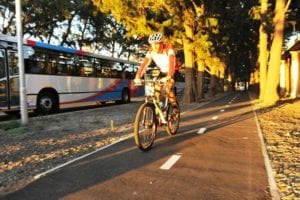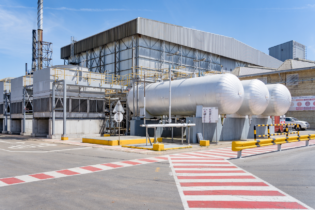Echoing the vision of the City of Curitiba, Brazil, at the launch of the eThekwini’s Non-Motorised Transport (NMT) Network at the Green Hub in Durban the Mayor of the eThekwini Municipality, James Nxumal, stated that the city “is a city for people and not a city for cars”.
Nxumal maintained the city’s “commitment for the development of public transport infrastructure plans to harness people power to propel themselves forward.” Many cities throughout the world that have improved their transportation infrastructure by creating sustainable integrated rapid public transport networks have included a Non-Motorised Transport component option. This definition includes all means of transport that are “human powered” such as walking, cycling, and variants such as roller skates, skateboards, push scooters and hand carts, as well as wheelchair travel. “Our situation however in South Africa differs from the other NMT’s in that it includes the provision of safe, manageable and accessible lanes and routes for citizens to reach public transport infrastructure,” said Nxumalo at the launch.Durban’s dedicated infrastructural plan for the NMT network will include sidewalks, off-road paths, safe crossings, pedestrian bridges and cycle areas, for recreational and commuting purposes. The focus, however, will be on commuter-based use, which will enable people to walk and cycle throughout the city. The vision of the NMT is to have a safe, functional and attractive environment for NMT users.
The success of the NMT will be assessed on how it delivers on these four aspects:- Its ability to connect people to places and communities
- How it enhances lifestyles and results in an environment that is safer
- How it promotes economic growth and prosperity, and
- Whether it is delivered in an efficient and sustainable way








